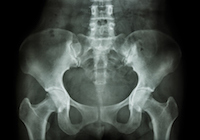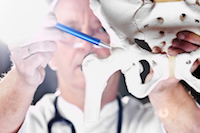LAWSUITS NEWS & LEGAL INFORMATION
Stryker Accolade Hip Replacement Lawsuit
Were you looking for Stryker Hip Replacment Lawsuit lawsuits?
By Heidi Turner
Attorneys are investigating possible Stryker Accolade lawsuits, alleging patients were harmed by defective hip implants. Although Stryker Accolade has reportedly been linked to an increased risk of metallosis, some studies also suggest the Stryker Accolade is linked to a risk of spontaneous dissociation, in which the femoral head comes loose from the stem. At issue may be the use of the Stryker LFIT V40 femoral head, which was used in the Accolade TMZF, the Accolate 2, and the Citation and Meridian.
FREE STRYKER ACCOLADE LAWSUIT EVALUATION
Send your Stryker Accolade claim to a lawyer who will review your claim at NO COST or obligation.
GET LEGAL HELP NOW
GET LEGAL HELP NOW
Stryker Accolade TMZF
 The Stryker Accolade TMZF is a hip implant device made by Howmedica (a subsidiary of Stryker Corporation). Unlike other new hip implant devices, which are metal-on-metal, the Accolade TMZF is made of a proprietary blend of titanium, iron, molybdenum and zirconium (TMZF), which was marketed as being stronger and more flexible than other alloys. Some studies, however, suggest Stryker Accolade may also be at risk of failure, including dissociation of the femoral head from the stem, and metallosis.
The Stryker Accolade TMZF is a hip implant device made by Howmedica (a subsidiary of Stryker Corporation). Unlike other new hip implant devices, which are metal-on-metal, the Accolade TMZF is made of a proprietary blend of titanium, iron, molybdenum and zirconium (TMZF), which was marketed as being stronger and more flexible than other alloys. Some studies, however, suggest Stryker Accolade may also be at risk of failure, including dissociation of the femoral head from the stem, and metallosis.Both the Accolade TMZF and the Accolade 2 stems use the LFIT V40, which is reportedly linked to a higher risk of taper lock failure and other problems. As a result of these issues, Health Canada issued a recall of certain lots of the device but the US Food and Drug Administration has not followed suit.
Stryker Accolade Failure
Warning signs that there is a potential problem with the hip implants include pain, swelling, and reduced mobility of the hips.
In 2015, The Journal of Bone and Joint Surgery has recounted two situations in which patients suffered premature failure of their hip implants. The first was the story of a 62-year-old male who developed severe pain and limited mobility seven years after hip implant surgery during which he received a Stryker Accolade TMZF hip implant system. In addition to dissociation, the patient also developed substantial metal debris in surrounding joint lining and fluid (metal debris absorbed by surrounding tissue is often referred to as metallosis). The second story recounted was that of a 65-year-old male who also developed pain and limited mobility seven years after receiving his Stryker Accolade TMZF system. He was diagnosed with dissociation of the femoral head and metallosis. Both patients included in the report underwent revision surgery.
Stryker Accolade Metallosis
Stryker Accolade Lawsuits
Stryker Accolade Hip Replacement Legal Help
If you or a loved one has suffered similar damages or injuries, please click the link below and your complaint will be sent to a lawyer who may evaluate your claim at no cost or obligation.Last updated on
STRYKER ACCOLADE LEGAL ARTICLES AND INTERVIEWS
Stryker Hip Settlement Expanded

Health Canada Recalls Certain Stryker Hip Lots


December 27, 2016
New York, NY: Patients who had certain Stryker hip replacements implanted but found themselves ineligible for the 2014 Stryker hip settlement received some good news. Those patients who had the Stryker ABG II Modular Neck Hip Stem and Rejuvenate Modular Neck Hip Stem implanted from 2014 to December 19, 2016, are now eligible to take part in the 2014 settlement. The announcement does not affect the Accolade TMZF, but settlements in lawsuits concerning other hip replacement devices could indicate a willingness to settle Accolade claims. READ MORE
Health Canada Recalls Certain Stryker Hip Lots

November 1, 2016
Ottawa, ON: Health Canada has stepped ahead of the US Food and Drug Administration (FDA), in announcing a recall of certain lots of components associated with the Stryker Accolade hip replacement devices. Specifically, the agency recalled units of the LFIT Anatomic COCR V40TM and COCR LFIT femoral heads, manufactured before 2011. READ MORE
READ MORE Defective Hip Implant Settlements and Legal News
READ MORE Drugs/Medical Settlements and Legal News
READ MORE Personal Injury Settlements and Legal News
READ MORE Drugs/Medical Settlements and Legal News
READ MORE Personal Injury Settlements and Legal News

READER COMMENTS
Bob Matiushyk
on
Albert Gadbois
on
On November 29, 2022 I went through revision surgeries due to groin pain and blood poisoning (high levels of chrome and cobalt). In addition, I had 3 dislocations (total of five operations) due to bone decay.
Would I qualify for compensation under your pending class action?
TIA.
Sharon Little
on